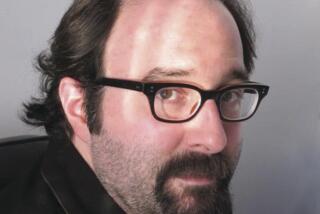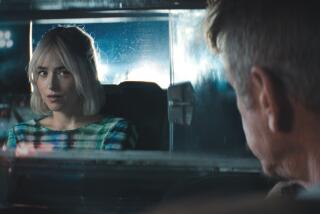High school reunion: Hey, Bud, let’s party!
- Share via
In 1982, I owned a pair of black-and-white-check Vans tennis shoes just like the ones worn by Sean Penn in “Fast Times at Ridgemont High.” Though I am now somewhat embarrassed by that admission, at the time I thought they made me something that I definitely was not -- cool.
“Fast Times,” directed by Amy Heckerling (in her feature debut) and based on Cameron Crowe’s book, followed a bunch of well-drawn Southern California types during one school year. Although I didn’t actually identify with Penn’s quintessential pothead surfer, Jeff Spicoli, I liked his shoes and blunt, expressive language -- most of which cannot be repeated here. I was more akin to Mark “Rat” Ratner (played by Brian Backer), the insecure guy afraid to make a move without consulting his cooler friend, Damone (Robert Romanus).
Crowe spent ‘79-’80 -- my senior year -- undercover at a San Diego high school researching the book that he later adapted as his first produced screenplay. As a result, “Fast Times” granted me a way of vicariously repeating that year -- and this time I enjoyed it.
Eleven years later, another high school movie arrived that connected with me on a parallel level. Richard Linklater’s “Dazed and Confused” was set in 1976 and revolved around a group of Texas teens, covering 24 hours on their last day of school.
Together, the movies create a kind of cinematic diptych of that time. Besides their high school settings and chronological proximity, the movies had a few other similarities. Both were ensemble comedies released by Universal (which has paired them in a DVD set called “The Ultimate Party Collection,” the stimulus behind my reminiscence) and both featured large casts of young actors who would go on to prominence. Not coincidentally, the films share the same casting director, Don Phillips.
Along with Penn, “Fast Times” starred Jennifer Jason Leigh, Judge Reinhold, Phoebe Cates and, in smaller roles, Forest Whitaker, Eric Stoltz, Anthony Edwards and Nicolas Coppola (now Cage). The immense “Dazed” cast included such nascent stars as Matthew McConaughey, Ben Affleck, Milla Jovovich, Parker Posey and Renee Zellweger (in a nonspeaking role).
Both films also owe a debt to George Lucas’ 1973 film, “American Graffiti.” “Fast Times” followed its “where are they now?” conclusion and “Dazed” borrowed its 24-hour timeline.
A big difference in the two movies was the music, a direct influence of their respective times, even though they are set only a few years apart.
“Dazed” falls squarely in the ‘70s and from the opening strains of Aerosmith’s “Sweet Emotion,” through some Alice Cooper, ZZ Top and Foghat, the soundtrack is pure classic rock. “Fast Times” rests in a confluence of the waning eminence of album-oriented rock and the rise of MTV. Led Zeppelin was still the make-out music of choice, and we hear Tom Petty and Jackson Browne sharing space with the not-yet-totally ‘80s stylings of the Go-Go’s, the Cars and Oingo Boingo.
The movies also take different tones in defining their respective worlds. “Fast Times’ ” humor is broader, goofier. It’s also a more romantic notion of high school, even with Heckerling’s emphasis on the pressures felt by teens juggling homework and jobs, relationships and sex, and the ever-present demand to have a good time.
Linklater’s charges also know how to cut loose. In fact, the quest for buzz and brew in “Dazed” even overrides the characters’ more prurient drives. There is an underlying gravity for their need to party. It’s an escape. For Spicoli, a way of life.
While Crowe’s dialogue is realistic, and the sex and drug use by teens was groundbreaking, the experience of seeing it now is that of watching a funny movie stuck in the ‘80s.
Linklater’s film is more visceral, less plot-driven. His characters are up all night, indulging in his trademark philosophical debates, and you get the sense that their stories will continue beyond the film.
“Fast Times” hasn’t aged as well as “Dazed,” but it was a bigger hit and has had more influence, including at least one legacy: Countless surfers have surely modeled themselves on Penn’s Spicoli, much the same way real-life Mafiosi pattern their speech and mannerisms on the “Godfather” movies.
More to Read
Only good movies
Get the Indie Focus newsletter, Mark Olsen's weekly guide to the world of cinema.
You may occasionally receive promotional content from the Los Angeles Times.











